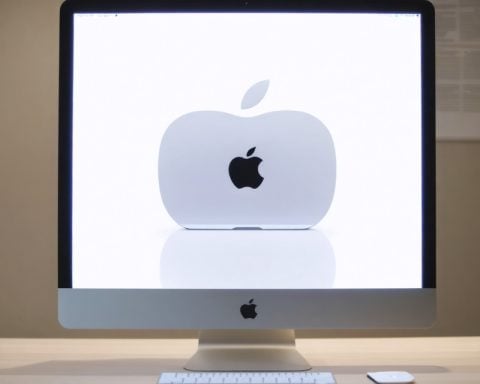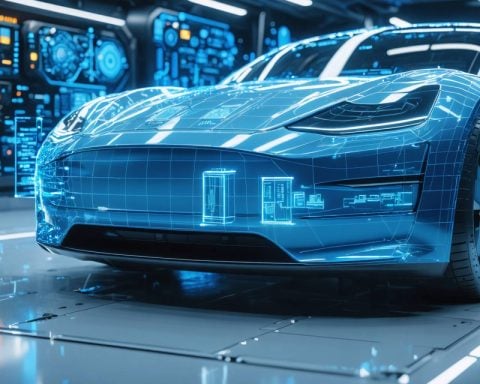The development of reusable launch vehicles (RLVs) has marked a significant evolution in space exploration and satellite deployment. Among the notable projects aimed at revolutionizing this technology is the X-33 space shuttle. Designed during the late 1990s, the X-33 represented a bold attempt to create a cost-effective, reusable spacecraft that would usher in a new era of space travel.
The X-33 was developed by NASA and Lockheed Martin as part of the VentureStar program, which aimed to demonstrate advanced technologies for next-generation space systems. One of the most innovative features of the X-33 was its aerospike engine, which promised improved performance at various altitudes compared to traditional rocket engines. This design was expected to provide optimal thrust efficiency, potentially reducing the overall cost of transporting payloads to orbit.
Additionally, the X-33 was intended to be a fully reusable spacecraft with a focus on rapid turnaround times. The concept was to create a vehicle that could be launched multiple times without the need for extensive refurbishment between missions, unlike the Space Shuttle program that had been operational since the 1980s. This reusability was anticipated to lower the cost per launch significantly, making space access more affordable for both government and commercial operators.
The materials used in the construction of the X-33 also represented a leap forward in aerospace engineering. The vehicle was planned to utilize advanced composite materials and a unique thermal protection system designed to withstand the intense heat generated during re-entry into the Earth’s atmosphere. Such innovations aimed to enhance durability and efficiency, further supporting the goal of creating a vehicle that could be reused efficiently.
Although the X-33 project faced various challenges—including technical difficulties, budget constraints, and an eventual cancellation in 2001—the lessons learned from its development have had a lasting impact on the field of aerospace engineering. Engineers and scientists gained invaluable insights into the complexities of RLV design and operation, which have influenced subsequent programs, such as the SpaceX Falcon 9 and NASA’s Artemis missions.
In conclusion, while the X-33 did not reach its intended objectives as a fully operational reusable space shuttle, its influence on launch vehicle technology cannot be overstated. The advancements in engine design, materials, and reusability concepts developed during the project have paved the way for future innovations in space travel. It stands as a reminder of the ambitious goal of making space more accessible and the relentless pursuit of technological advancement in the aerospace sector. The legacy of the X-33 continues to inspire new generations of engineers and visionaries eager to push the boundaries of what is possible in space exploration.
Tips, Life Hacks, and Interesting Facts About Reusable Launch Vehicles
The exploration of space has always fascinated humanity, and advancements in technology continue to push the boundaries of what is possible. Here, we present some tips, life hacks, and interesting facts related to reusable launch vehicles (RLVs), drawing inspiration from the groundbreaking work of the X-33 project.
1. Stay Informed
Understanding the latest developments in space technology is crucial. Subscribing to reputable aerospace magazines or following NASA and SpaceX on social media can help you stay updated on new projects and missions. This knowledge can also spark new ideas and inspire innovations in your own field.
2. Learn from Challenges
The X-33 faced significant hurdles during its development, from technical challenges to budget constraints. Embracing failures as learning opportunities can be a valuable life lesson. Whether in personal projects or professional endeavors, remember that challenges can lead to breakthroughs and innovation.
3. Utilize Advanced Materials
The aerospace sector continually utilizes composite materials for weight reduction and strength. You can apply this concept in daily life by choosing lighter, stronger alternatives to traditional materials. For instance, when buying luggage, opt for lightweight composite materials to ease transport.
4. Emulate Reusability
The principle of reusability extends beyond aerospace into everyday life. For example, consider using reusable bags, containers, and water bottles to reduce waste. This not only benefits the environment but also encourages a mindset of sustainability.
5. Explore Aerodynamics
Understanding the basics of aerodynamics can enhance your knowledge of how vehicles operate. You could experiment with simple models, like paper airplanes or drones. These activities can provide practical experience in the fundamental concepts of flight.
6. Engage with Technology
If you’re interested in the design and function of RLVs, consider learning programming or robotics. Engaging with these technologies can provide insights into how launch systems are engineered and operated. Joining community workshops or online courses can enhance your skills and understanding.
7. Celebrate Innovation
Recognize and celebrate the achievements of space missions and technological innovations. Participate in events or discussions focusing on space exploration. Engaging with like-minded individuals can foster new ideas and invigorate your passion for science and technology.
Interesting Fact: The concepts pioneered in projects like the X-33 laid the groundwork for modern missions, influencing the designs of rockets such as SpaceX’s Falcon 9, which successfully implements reusability features that drastically reduce launch costs.
Remember, whether in aerospace or any other field, the pursuit of knowledge and innovation is a journey. With each project, like the X-33, we learn more about what is achievable, continually inspiring us to reach new heights. For more information on the evolving landscape of aerospace technology, visit NASA or SpaceX.







